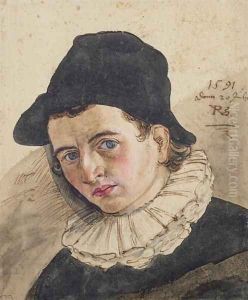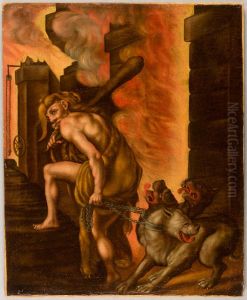Philipp Uffenbach Paintings
Philipp Uffenbach was a notable German artist born in 1566, in the bustling city of Frankfurt am Main, which was then part of the Holy Roman Empire. Uffenbach, whose full name is often given as Philipp Uffenbach the Elder to distinguish him from relatives who were also artists, was a significant figure in the transition between the Renaissance and Baroque periods in German art. His contributions to the art world were primarily in the realms of painting and engraving, showcasing a remarkable versatility and depth in his works.
Uffenbach received his initial training in his hometown of Frankfurt, a city known for its vibrant artistic community. The specifics of his early education in the arts remain somewhat unclear, but it is evident that he was profoundly influenced by the broader European Renaissance movement, absorbing both its thematic concerns and its stylistic innovations. As he matured as an artist, Uffenbach began to develop a distinctive style that blended traditional elements with emerging Baroque sensibilities, particularly in his use of light, shadow, and dynamic compositions.
Throughout his career, Uffenbach was a prolific artist, though many of his works have unfortunately been lost over time. He was especially known for his religious paintings, which often depicted scenes from the Bible with intense emotional depth and intricate detail. These works not only reflect Uffenbach’s deep engagement with spiritual themes but also demonstrate his skill in capturing human emotion and divine mystery. In addition to his religious paintings, Uffenbach also produced a number of portraits and historical scenes, which further attest to his versatility as an artist.
Uffenbach's influence extended beyond his immediate output; he was also a respected teacher, passing on his techniques and artistic vision to the next generation of artists. His legacy is seen in the continuation of his stylistic innovations and thematic preoccupations in the works of his students and those they influenced in turn.
Despite his contributions to the development of German art, Philipp Uffenbach's work has not always received the same level of recognition as some of his contemporaries. Nevertheless, his art remains an important bridge between the Renaissance and Baroque periods, reflecting the transitional nature of the era in which he lived. Uffenbach died in 1636, in Frankfurt, leaving behind a body of work that continues to be studied and appreciated for its artistic and historical significance.


